|
Home » Sponsored » Pi Speakers » Modifed 4 Pi Build Report (Design)
| Modifed 4 Pi Build Report [message #68569] |
Fri, 15 July 2011 23:46  |
 Dave_S
Dave_S
Messages: 28
Registered: April 2011
|
Chancellor |
|
|
This my build thread of modified 4 Pi speakers. I purchased the parts from Wayne and chose the B&C DE250 compression driver upgrade, the JBL 2226 woofer upgrade, the 15 gauge inductor upgrade, the Jantzen Zcaps upgrade, and the Mills resistor upgrade.
What drew me to the 4 Pi speakers was that I had only heard one pair of commercial speakers that impressed me. Those were the Klipsch Chorus II speakers. At that time, I turned of the clasical music that sounded good on most speakers to my untrained ear and put my own CD of various alternative rock music. All speakers failed to impress, except the Klipsch. Since I did not have the money at that time after college, I selected the Polk 5 Jr+ speakers. Nowadays, Klipsch are not even available to listen to in my area. Over the years, I have listened to other speakers and determined that it was not worth the money to upgrade from my Polk 5 Jr+ speakers. I was left unimpressed and had almost given up upgrading my speakers. I do not have access to stores that have high end speakers, except the Best Buy Magnolia Room that has speakers that cost up to $1000 a piece. All of those speakers sound really bad to me and left me wondering if my hearing had degraded to the point where no speaker would sound decent. While on a trip, a coworker convinced me to consider building speakers. My only experience building speakers was in college. I randomly changed out drivers from old speakers with new drivers purchased from Radioshack. I made cross overs from windings made of magnet wire. They failed to impressed and I would never have considered building my speakers myself had it not been for the coworker.
Klipsch Chorus II speakers:
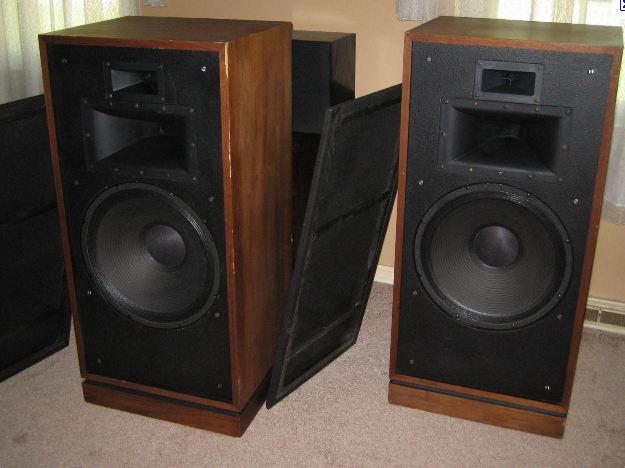
It was sort of shot in the dark, but I decided on 4 Pi speakers. To me it was a huge risk. One reason was that I decided to take the risk was that the speakers had a similar look to the Klispch speakers that I liked. I had never taken the grills of of the Klipsch speakers and the term horns meant nothing to me at the time. The Pi speakers also have more positive reviews than any other DIY speaker that I could find; the one exception might be the Linkwitz Lab Orions, but I did not have enough money burning a hole in my pocket. In many forums, Pi speakers are not mentioned and other designers are mentioned as having a good speaker design "pedigree". However, it was usually difficult to find people that had built the speakers. As for 4 Pi speakers, there were the build reports like I am doing that were all favorable. However, if you look at places like newegg.com, most all reviews of speakers that would make me cringe are positive. I placed more weight on forum posts where people were asked if they had heard the Pi speakers. There was often the reply that the person had walked by them while being demoed and they sounded really good. They were people with nothing invested in having anything but an honest oppinion.
Looking at the frequency response, my coworker was surprised by the frequency rolloff at the low end of the speaker. He concluded it was probably due to cabinet size. After some research, I determined that it was and decided to research making a larger enclosure. During the research, I saw that Wayne liked the rolloff of the 4 Pi design, because it blends with the subwoofers well. Since I may (at least initially) skip the subwoofers, I decided to make larger enclosures to extend the low frenquency response. It was a major decision because of the size. I decided on an enclosure that is about 5 cubic feet in volume. It could have been easily decreased down to 4.5 cubic feet with little negative affect, but due to other design issues, I ended up with my final enclosure size. For determining the enclosure size and frequency response, I used WinISD. I kept the enclosure tune to 38 Hz like the original 4 Pi design. The software is easy to use, but it does not shut down properly in Windows 7. I had to do a control-alt-delete to kill the program. The theoretical frenquency response of my speaker compared to the stock 4 Pi is shown below. The modified 4 Pi is the green curve:
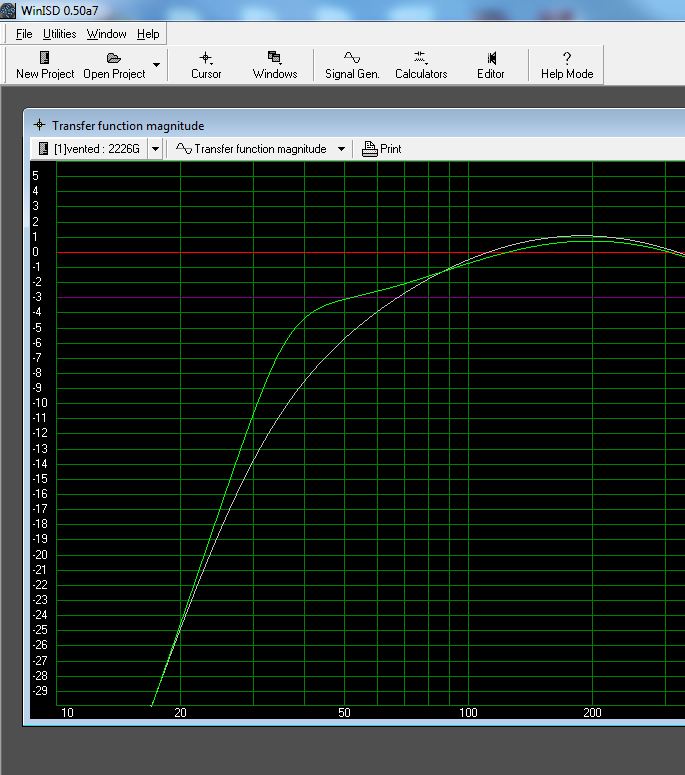
The software does not have any ability to determine standing wave issues to to the modified enclosure design. I had to take the risk. In addition, the tweeter/crossover cannot be included in the design.
For the design, I used Unigrahics for the cabinet design. It is the software that I use most days at work. I decided on base and wood trim to protect some of the veneer edges and provided a contoured edge. This is the design that I came up with:
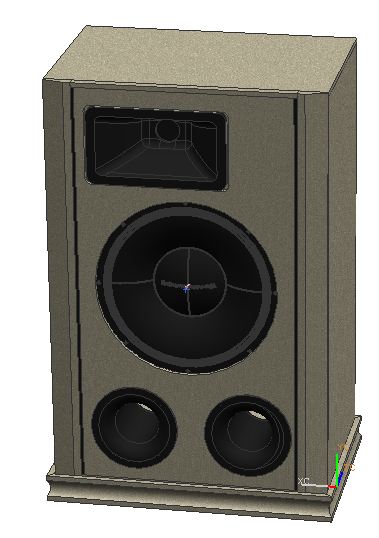
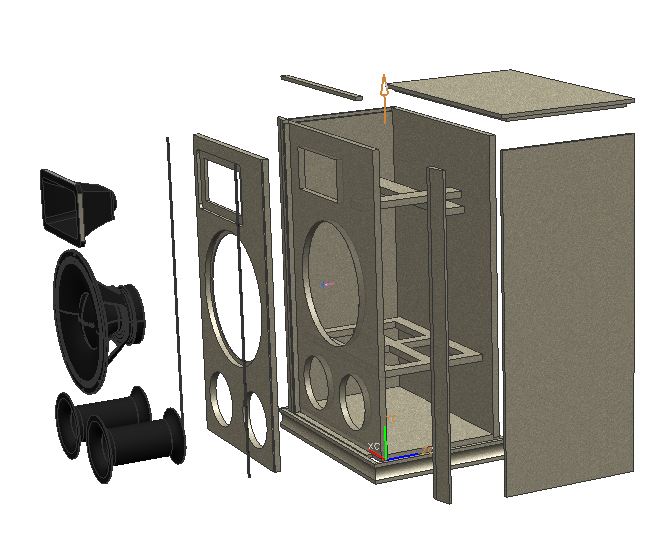
The following image is a comparison of the 4 Pi speaker to the modified 4 Pi speaker:
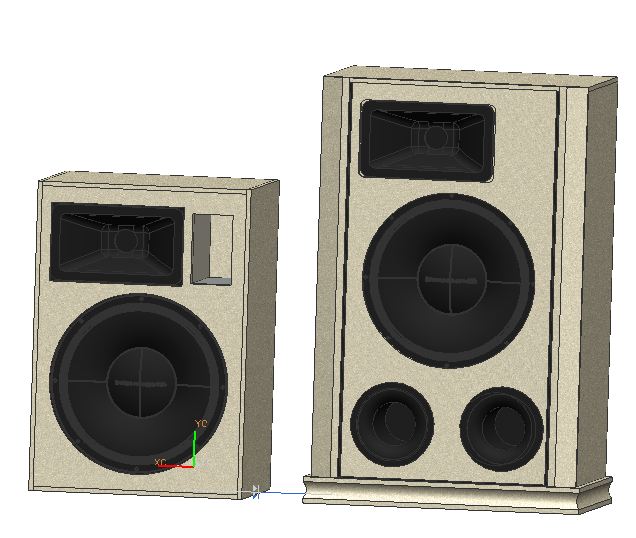
|
|
|
|
Current Time: Thu Nov 06 22:13:59 CST 2025
|







